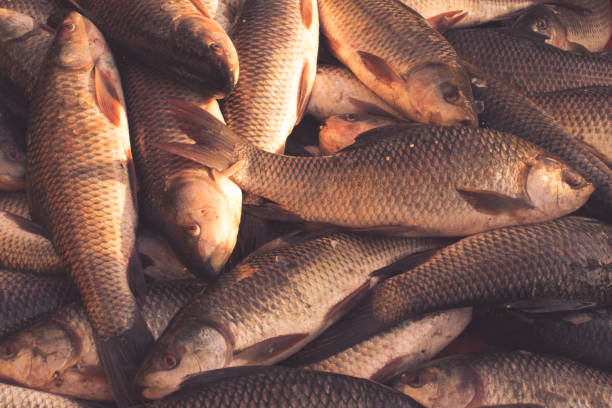Introduction – Sri Lanka’s Fish Market by the Numbers
Sri Lanka, the island nation nestled in the Indian Ocean, has long been a key player in the global fish trade. With its rich marine biodiversity and strong fishing traditions, the country has built an export-oriented fish sector that’s crucial to its economy.
In 2024, the country produced over 410,000 metric tons of fish, with marine fishing contributing the bulk. Despite challenges, Sri Lanka exported 22,595 metric tons of edible fish products, raking in over $284 million in 2024 alone. However, recent data from 2025 reveals a shifting landscape—production and export figures are fluctuating, and global demand patterns are evolving.
That’s why selecting the right fish supplier in Sri Lanka isn’t just about price—it’s about data, performance, and verified capabilities. Platforms like Freshdi offer real-time RFQ trends, supplier verification, and market insights that can help buyers make smarter decisions in this ever-changing landscape.
Let’s dive deep into what makes Sri Lanka’s fish industry tick, and how you can identify the Top 4 Fish Suppliers in Sri Lanka in 2025 to power your supply chain.
Deep Dive – Key Production, Export Statistics & Demand Insights
📈 Annual Fish Production Stats
- 2023 Total Production: 410,760 metric tons
- Marine: 308,430 MT
-
Inland & Aquaculture: 102,330 MT
-
2024 Total Production: 411,000 MT
- Jan–May 2025: 160,000 MT (12.4% YoY decline)
- Projected 2028 Output: 69,000 MT from industrial fisheries (3.3% CAGR)
Despite a long-term upward trend, 2025 has seen production hiccups due to a 38.1% dip in inland fishing and 2.8% in marine fishing, indicating resource or operational challenges.
💰 Export Value & Volume
- 2024 Exports:
- Volume: 22,595 MT
- Value: $284.25 million
- January 2025:
- Seafood exports: $17.67 million (−23.24% YoY)
- Ornamental fish exports: $1.57 million (−28.96%)
- Dried/Salted Fish Trends: Volume up, value down due to price drops
🌎 Key Export Destinations
- Top Markets (2025):
- United States: $260.18M (23% of total exports)
- India: $81.9M (2nd largest, +43.86% YoY)
- Other Buyers:
- UK, Germany, France, China, Belgium, Netherlands, Qatar, North Korea, Japan
📊 Market Demand Trends
- Domestic Consumption:
- 2023: 416,000 MT
- 2028 (Forecast): 409,000 MT (−0.2% CAGR)
Sri Lanka ranks 16th globally in fish consumption, but local demand is slowly declining, which could shift more focus to export strategies.
Freshdi Insight
On platforms like Freshdi, RFQ volumes for Sri Lankan seafood have mirrored these shifts—showing increased interest in dried fish and frozen seafood, while fresh fish requests have dipped.
Top 4 Verified Fish Suppliers in Sri Lanka – Proven Export Performers
Here are the Top 4 Fish Suppliers in Sri Lanka in 2025, selected based on export volume, certifications, global reach, and verified buyer reviews on Freshdi.
1. Acril Tea
- Specialty: Dried Sea Cucumber, Sand Fish
- Certifications: HACCP, FDA, ISO22000
- Market Focus: China, Japan, Vietnam
- Why They Stand Out: Known for sustainable sun-drying techniques and consistent quality. Highly rated by bulk buyers on Freshdi.
2. Oceanic Blue Exports
- Specialty: Frozen Tuna, Grouper, Snapper
- Certifications: EU Approval, BRC, MSC
- Market Focus: EU, UAE, USA
- Why They Stand Out: EU-compliant processing facilities and traceable cold chain logistics make them a go-to supplier.
3. Blue Pearl Seafood Pvt Ltd
- Specialty: Fresh & Frozen Shrimps, Reef Fish
- Certifications: Global GAP, ISO9001
- Market Focus: India, Qatar, Saudi Arabia
- Why They Stand Out: Strong regional presence and competitive pricing on RFQs via Freshdi.
4. Ceylon Aqua Harvest
- Specialty: Inland farmed Tilapia, Catfish
- Certifications: Aquaculture Stewardship Council (ASC)
- Market Focus: United States, France, Germany
- Why They Stand Out: Focused on eco-friendly inland aquaculture; high demand for their sustainably farmed species.
Dynamic Ranking Note
Buyer activity on platforms like Freshdi influences supplier visibility dynamically. Freshdi frequently updates “Suppliers of the Month/Quarter” based on RFQ wins, fulfillment rates, and customer feedback—so keep an eye on those rankings for the latest top performers.
Market Navigation – Statistical Trends, Pricing Analysis & Export Dynamics
📉 2025 Export Performance Snapshot
- Jan–Feb 2025: Seafood exports down 28.44% ($31.27M)
- May 2025: $13.56M (−22.11% YoY)
- Fresh Fish: −61.96%
- Shrimp: −79.2%
These numbers show a tough year for fresh and live exports—largely due to lower catches and price competition.
🧊 Frozen Fish Segment: A Silver Lining
- 2024 Market Growth: +7.1% YoY ($266M value)
- Imports of Frozen Fish: Up 33% to $7.41M in 2023
Frozen seafood is becoming the growth engine, as global buyers shift toward shelf-stable, convenient options.
🌍 Regional Export Performance
- EU: Exports grew 7.59% in Jan–May 2025
- US: Live fish exports $9.96M in 2024
- Meat/Fish Preparations: $28.47M
The EU and U.S. remain promising, especially for value-added fish products.
📈 Production & Consumption Forecasts (2023–2028)
- Fish Production:
- 2023: 56,000 MT
-
2028: 69,000 MT (3.3% CAGR)
-
Domestic Consumption:
- 2023: 416,000 MT
- 2028: 409,000 MT (−0.2% CAGR)
💡 Price Volatility Insight
While direct price data is limited, export earnings indicate price pressures, especially for shrimps and fresh fish. Historical RFQ data on Freshdi shows that prices typically spike during Q3 (harvest declines) and dip post-monsoon in Q1.
Conclusion – Leveraging Data for Optimized Supply Chains
Sri Lanka’s fish sector is a blend of opportunity and complexity. With solid production volumes and a growing orientation toward frozen and value-added exports, the country remains a strong sourcing destination. However, 2025’s challenges—declining fresh fish exports, volatile pricing, and shifting global demand—require a smarter, more strategic approach to supplier selection.
That’s where platforms like Freshdi truly shine. By offering:
- Verified supplier profiles
- RFQ analytics and quote comparisons
- Real-time demand dashboards
- Export performance metrics
Freshdi helps businesses source confidently and competitively.
Whether you’re an importer, distributor, or food processor, using data to drive your sourcing decisions from Sri Lanka can be the difference between a good year and a great one.
🔍 Key Takeaways
- Sri Lanka exported over $284M in fish products in 2024.
- U.S. and India are the top export destinations in 2025.
- Frozen fish exports are growing while fresh fish faces challenges.
- Supplier selection should focus on certifications, performance data, and responsiveness.
- Freshdi offers tools for smarter sourcing and market intelligence.
✅ Buyer’s Checklist for Sourcing Fish from Sri Lanka
- ✅ Check supplier certifications (e.g. EU Approval, BRC, MSC)
- ✅ Use Freshdi to compare RFQs and supplier ratings
- ✅ Focus on frozen or dried fish categories for stability
- ✅ Monitor export trends and price movements quarterly
- ✅ Prioritize suppliers with consistent export history and global reach
🚀 Future Outlook
As Sri Lanka’s fish production scales up through 2028, and aquaculture gains traction, the export landscape will continue evolving. Buyers who stay agile, track market analytics, and use platforms like Freshdi will be best positioned to capitalize on new opportunities—whether it’s in dried sea cucumber, frozen snapper, or farmed tilapia.
FAQs
1. What are the most exported fish products from Sri Lanka in 2025?
Dried and salted fish, frozen tuna, sea cucumber, and ornamental fish are among the top exports. Fresh fish and shrimp exports have declined significantly.
2. Which markets are growing for Sri Lankan fish exports?
The EU and U.S. markets are showing strong performance, especially in processed and frozen categories. India also recorded a 43.86% increase in imports from Sri Lanka in early 2025.
3. How do I verify a Sri Lankan fish supplier?
You can use platforms like Freshdi to view verified supplier profiles, certifications, export histories, and buyer reviews.
4. Are prices for Sri Lankan fish stable?
Not entirely. Prices for fresh fish and shrimp have shown volatility due to supply drops and market competition. Frozen and dried segments are more stable.
5. What’s the best time of year to source fish from Sri Lanka?
Q1 typically offers better pricing post-monsoon, while Q3 may see pricing spikes due to lower harvests. Monitoring seasonal trends through RFQ data on Freshdi is recommended.
References
- Sri Lanka Fishery Industry Report 2025 (ReportLinker)
- Sri Lanka Export News January 2025
- Central Bank of Sri Lanka – Agriculture Bulletin June 2025
- Dried/Salted Fish Market Analysis – IndexBox
- Fishery Products Industry Capability Report 2025
- Seafood Export Performance February 2025
- Frozen Fish Market Report – IndexBox
- Freshdi Platform


